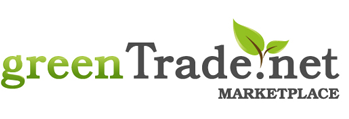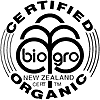Organic agriculture and organic markets in Europe - update
In a comprehensive article about organic agriculture in Europe, Helga Willer of the Research Institute of Organic Agriculture (FiBL) and Diana Schaack of the Agricultural Market Information Company (AMI) give an overview of results of the market data collected in the OrganicDataNetwork project. This project was funded by the European Union (EU) under its 7th framework programme for research, demonstration and technological development and ended in 2014. For the first time, detailed organic market data for all European countries was collected and stored in one single database, which is available online. The data were published in the 2015 edition of "The World of Organic Agriculture."
Organic agricultural land is now at 11.5 million hectares in Europe (2013), constituting 2.4 percent of the continent’s agricultural land. In the
European Union, 10.2 million hectares of farmland were organic, with a share of 5.7 percent of its agricultural land being organic in 2013 (for full article see http://orgprints.org/28706/ ). In eight European countries (European Union: six countries), ten percent or more of the agricultural land is organic. Growth of organic agricultural land has been substantial in
Europe and in the European Union over the last decade, where the organic area has almost doubled since 2004, when most of the new member states (EU-13)became part of the European Union. In the new
member states after their accession to the EU, organic farming became, due to policy support and access to major markets, an attractive option. Land use data show that organic agriculture produces
a wide range of products according to the demand of the markets. Organic production in the EU-13, the EU candidate and potential candidate countries (CPC),? and other European countries has filled
many gaps for the EU-15? countries, where production volumes of raw materials are insufficient.
With retail sales in 2013 valued at 22.2 billion euros, the European Union is the second largest single market for organic products in the world after the United States. The market showed a growth rate of approximately 6 percent. The European market for organic products was valued at approximately 24.3 billion euros (North America almost 27 billion euros). European countries have top rankings for market share and per capita consumption worldwide: three countries have an organic food market share of more than five percent, with individual products and product groups reaching even higher shares. Eggs, for instance, can constitute as much as 20 percent of all eggs sold. Baby food or meat substitutes reach organic shares of about 50 percent. Five countries had a per-capita consumption of more than 100 euros in 2013. Almost no data is available on exports and imports, but it may be assumed that, with the growing domestic markets, international trade activities will increase for both intra-EU trade as well as exports and imports to and from the European Union.
More information
Contact
Diana Schaack
Agrarmarkt Informations-Gesellschaft mbH (Agricultural Market Information Company)
Dreizehnmorgenweg 10
53175 Bonn
Germany
Tel. +49 228 33805 270
Fax +49 228 33805 591
info(at)AMI-informiert.de
www.ami-informiert.de
Dr. Helga Willer
Research Institute of Organic Agriculture FiBL
Ackerstrasse 113
5070 Frick
Switzerland
Tel.+41 62 865 7207
Fax +41 62 865 7273
helga.willer(at)fibl.org
www.fibl.org
















